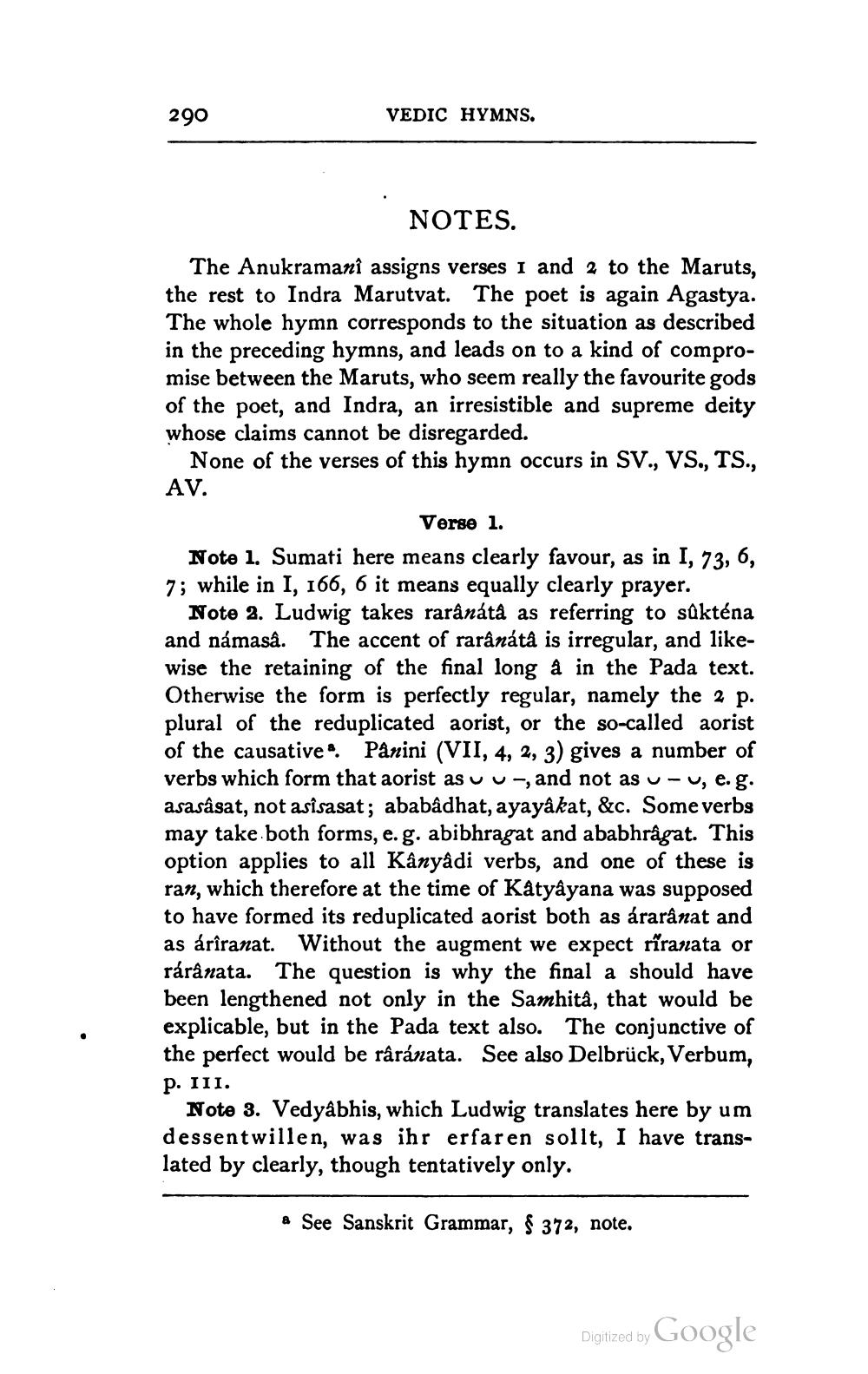________________
290
VEDIC HYMNS.
NOTES. The Anukramanî assigns verses 1 and 2 to the Maruts, the rest to Indra Marutvat. The poet is again Agastya. The whole hymn corresponds to the situation as described in the preceding hymns, and leads on to a kind of compromise between the Maruts, who seem really the favourite gods of the poet, and Indra, an irresistible and supreme deity whose claims cannot be disregarded.
None of the verses of this hymn occurs in SV., VS., TS., AV.
Verse 1. Note 1. Sumati here means clearly favour, as in I, 73, 6, 7; while in I, 166, 6 it means equally clearly prayer.
Note 2. Ludwig takes rarânátå as referring to sûkténa and námaså. The accent of rarânátå is irregular, and likewise the retaining of the final long å in the Pada text. Otherwise the form is perfectly regular, namely the 2 p. plural of the reduplicated aorist, or the so-called aorist of the causative *. Panini (VII, 4, 2, 3) gives a number of verbs which form that aorist asuu-, and not as u-u, e.g. asasâsat, not asisasat; ababâdhat, ayayâkat, &c. Some verbs may take both forms, e.g. abibhragat and ababhragat. This option applies to all Kányádi verbs, and one of these is ran, which therefore at the time of Katyayana was supposed to have formed its reduplicated aorist both as árarânat and as árîranat. Without the augment we expect rîranata or rárânata. The question is why the final a should have been lengthened not only in the Samhità, that would be explicable, but in the Pada text also. The conjunctive of the perfect would be râránata. See also Delbrück, Verbum, P. III.
Note 3. Vedyabhis, which Ludwig translates here by um dessentwillen, was ihr erfaren sollt, I have translated by clearly, though tentatively only.
a See Sanskrit Grammar, $ 372, note.
Digitized by
Digitized by Google




